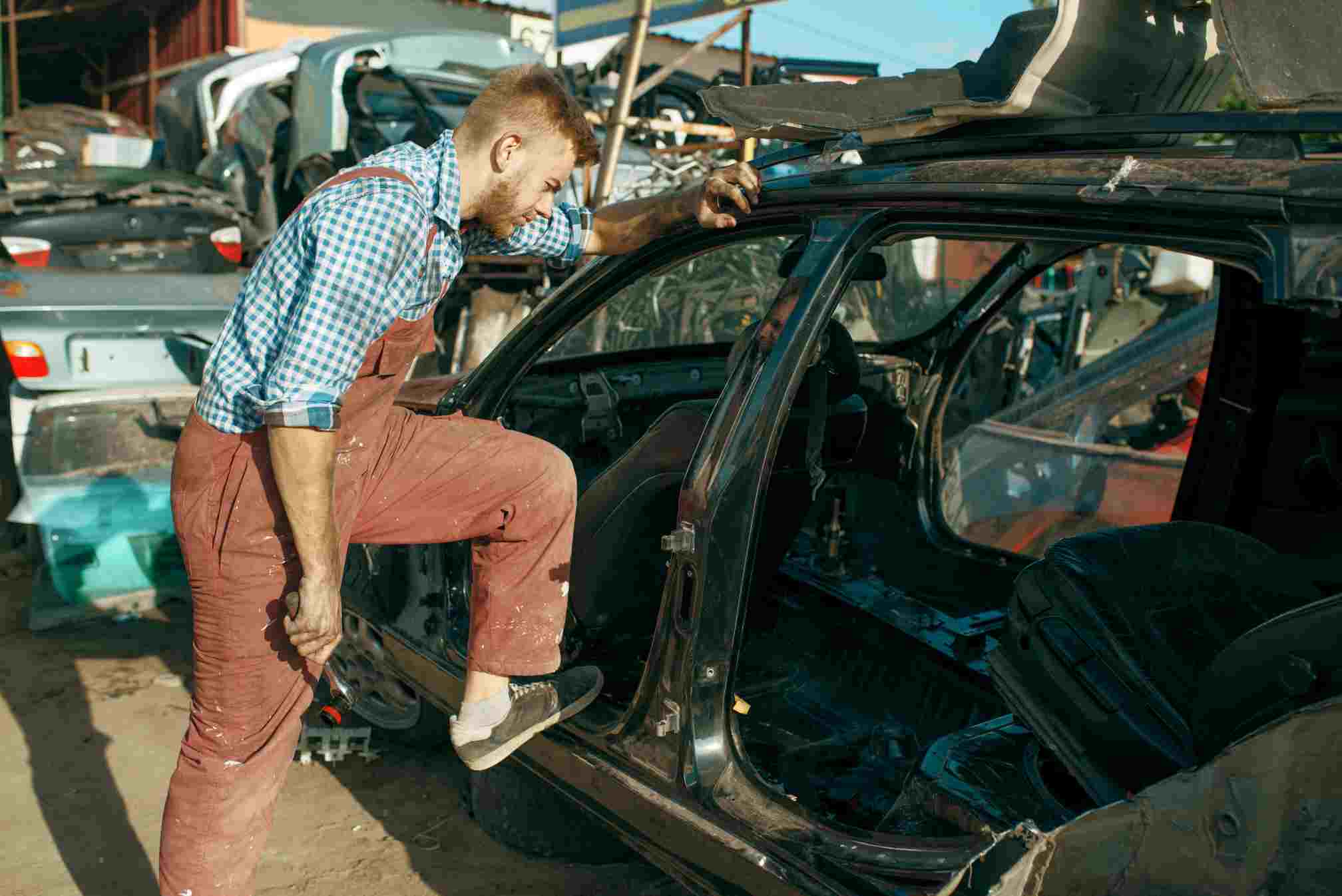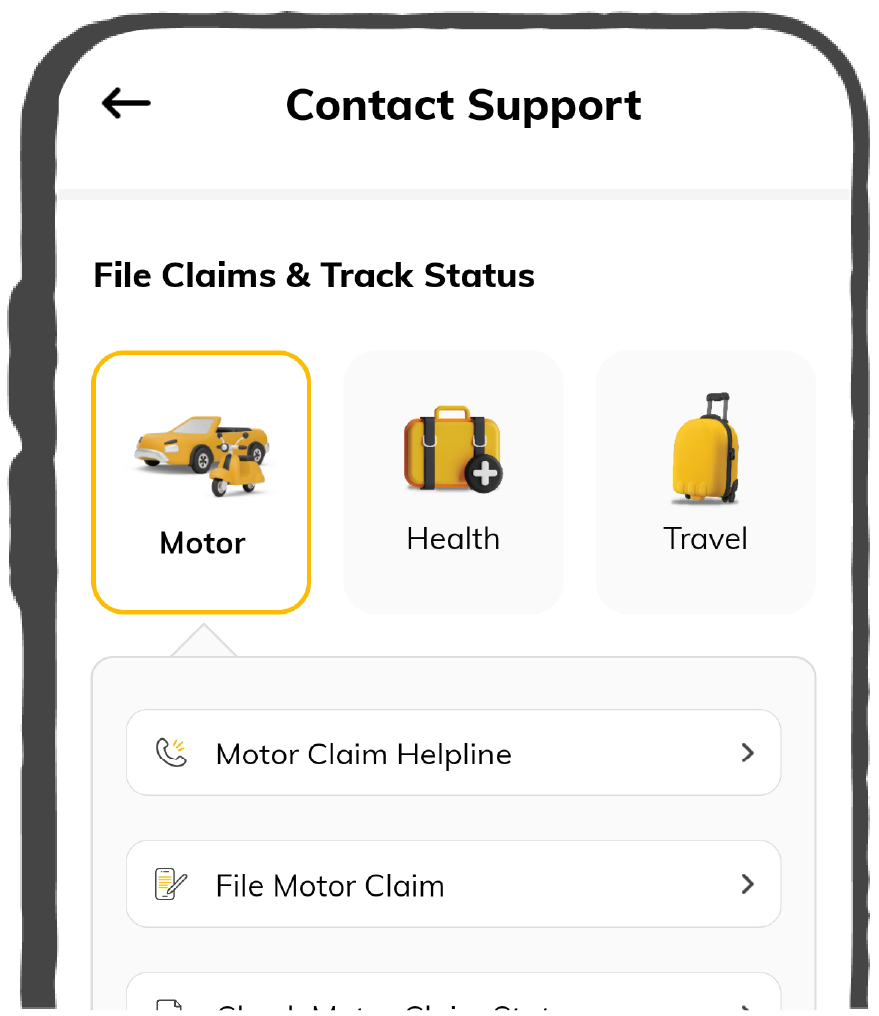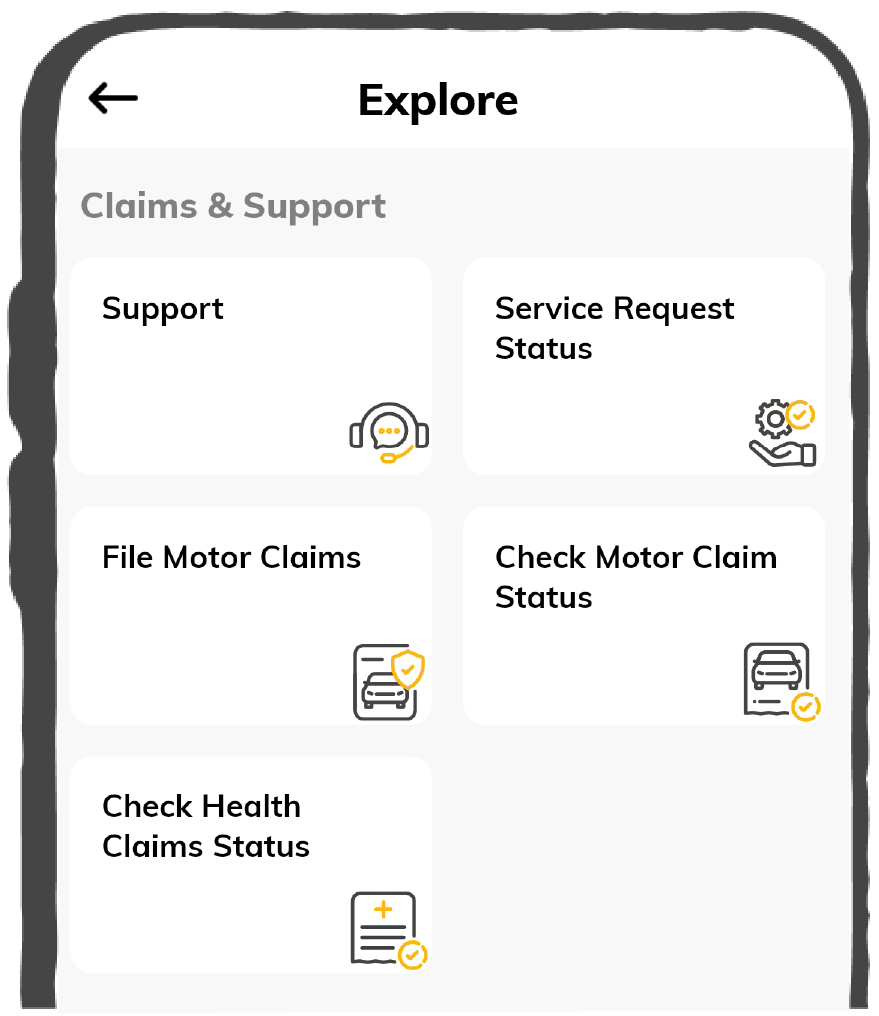
9000+ Cashless Garages
96% Claims Settled (FY 23-24)
What is Salvage/Total Loss in Car Insurance?

Salvage is a vital aspect of car insurance, most commonly identified if the car is a total loss. Understanding its types and how salvage works helps the policyholder file claims.
This article explains the idea of salvage in car insurance and how the insurers determine the vehicle's salvage value. It will help you navigate the claim process effectively and understand the options available for insurance.

Table of Contents

What is Salvage in Car Insurance?
Salvage in car insurance is when a vehicle has been adversely affected by an impairment such that it reaches a level for an insurance company to classify the vehicle as a total loss. In most instances, this occurs if it is met with a serious crash or disaster. As such, a vehicle is termed salvage.
In this scenario, the settlement likely to be paid by the insurer to the affected car owner shall equal the actual market value of the automobile, less deduction or excess. The car is then mostly sold to salvage yards and body shops for dismantling parts or repairs to be sold once more, albeit more likely with a rebuilt or salvage title.
How Does Salvage Work in Car Insurance?
A Car Insurance Policy provides protection coverage to you if you happen to be accountable for any damage/injury to someone else’s car or property, in an unfortunate incident of an accident or collision. But, a car insurance salvage declares a car a total loss after it has been severely damaged, usually by an accident, fire, or natural disaster. When the insurer determines the damage to the vehicle, the cost of repairs is compared to the car's market value.
If the repair cost exceeds a certain percentage of the vehicle's value, the insurance company may declare the car a total loss.
A declared loss vehicle is marked as a "salvage." After it has been declared a write-off, the insurer takes possession of the car and sells it to salvage yards, auction houses, or repair shops.
Those buyers may either dismantle the car for parts or repair and sell it as a "rebuilt" or "repaired" vehicle. Cars that have been fixed and returned to use have a salvage or rebuilt title, which usually reduces their resale value and influences their insurability.
An Illustration Explaining How a Salvage Works in Car Insurance
Sana owns a 2018 Ford Focus worth ₹7,50,000. Somewhere down the line, she was involved in a major car accident that caused heavy damage. A part of the car's front was crumpled, and damage was done to its engine as well. Her insurance company calculated that the cost of repairs was about ₹5,50,000, or 73% of its actual car value.
The insurer declares the vehicle to be a total loss because the repairs will cost a lot of money and almost equal the car's current market value. A payout of ₹7,00,000-the market value of the vehicle before the accident minus the excess on her policy is offered to Sana.
Sana agrees to the payment and hands over the vehicle to the carriers. Finally, the car is sent to a salvage yard, where it will either be dismantled for parts or refurbished for resale as a "rebuilt" vehicle.
Types of Salvage in Car Insurance
You must understand the different types of salvage titles when dealing with salvage vehicles. They can vary significantly regarding damage, repairability, and insurance implications. Here are the key types:
How is Salvage Value Calculated?
Several key factors come into play to calculate a car's salvage value, each affecting the final assessment. Here's a breakdown of the typical factors:
Current Market Value of the Car
First would be the car's market value before the damage. This value is determined by the vehicle's age, make, model, condition, and mileage and is based on industry-standard valuation databases.
Extent of Damage
Salvage value varies inversely with the extent of the vehicle's damage. Since the vehicle may be damaged superficially or even slightly, most of its value will be assumed to be retained.
Repair Costs vs Market Value
If the cost of repairs exceeds a percentage of the total vehicle market value (generally between 50-70 per cent), the insurance declares the car a total loss. The salvage value is a portion of the former market value.
Age and Condition of the Vehicle
This means that older cars with high mileage would have a lower salvage value. Newer or better-maintained vehicles have a higher retention value, and such consignments have a higher share of the salvage value.
Vehicle Parts and Demand
The demand for the vehicle's parts determines its salvage value. If the car is in high demand for parts or if the model is rare, then the salvage value is higher. Cars with standard parts sell better at salvage auctions.
Location and Market Trends
Salvage value may also depend on geographic location. For instance, if the area has a lot of demand for specific car parts or more scrap metal buyers, a particular car will have a more excellent salvage value.
Should You Sell or Retain a Salvage Vehicle?
When an insurance company declares a vehicle salvage, the owner usually has a choice to sell or keep it. Here are both options in brief:
Selling a Salvage Vehicle
In the case of a total loss, an insurance company offers to settle with the owner through a check based on the vehicle's pre-loss market value minus any applicable excess. After the vehicle is written off, it is sold at an auction to salvage yards and repair shops.
These bidders would either dismantle the car into parts or may repair and sell the vehicle as rebuilt. If the car is sold, it will be issued a salvage title (or rebuilt title if repaired). This can significantly impact its resale value and insurability because it is considered higher risk.
Keeping a Salvage Vehicle
Sometimes, the owner might keep the salvage vehicle and restore it at his own expense. It is costly, and several inspections would have to be done to certify the car for road use. According to state law, a vehicle could be titled as rebuilt or reconstructed after repair.
The car can legally be driven; however, the resale value diminishes thanks to the salvage history. Salvage cars can offer some difficulties regarding insurability. Some companies will not insure them or will raise their premiums. It all depends on the salvage title.
Some Common Misconceptions about Salvage
There are many myths regarding salvage vehicles; these are mostly creating confusion or inhibitions in the minds of customers or owners. Some of the most widely spread myths of salvage vehicles, along with the facts about them, are:
Salvage Vehicles Are Always Unsafe On The Road
Most people think most salvage vehicles are unsafe for driving. However, not every salvage vehicle is irreparable. Many salvage cars carry partial damage.
Salvage Title Means The Vehicle Is A Total Loss
A used car with a salvage title does not mean it must have been a total loss. Perhaps it was just too badly damaged, or the cost was too high to repair to be worth its market value.
Salvage Vehicles Are Tough To Insure
While salvage vehicles are generally harder to insure, this does not hold true for all insurance companies, as many have policies that cover rebuilt cars.
Salvage Cars Have No Value
Salvage cars hold value to those who want to strip them for their components or are willing to repair them, as they may be sold for parts or rebuilt and sold with a rebuilt title, but only at a lower price.
There Is No Financing Available for Salvage Cars
It is believed that no financing is provided on salvage vehicles. However, if a lender is willing to finance a salvage or rebuilt vehicle, it may be complicated and require a larger down payment.
How to Protect Your Vehicle Against Salvage Situations?
There are various ways to protect your vehicle against salvage situations. Here are a few tips to keep in mind:
Policyholder Options
The policyholder may decide to keep the salvage vehicle instead of opting for a lesser amount. This is termed as "salvage retention". When such a vehicle is taken, it must be repaired and inspected before it can hit the road.
Final Payment and Release
The insurance company closes the file once the claim is settled and the second-hand vehicle is sold or kept. The insurer will recover the corresponding settlement proportion by selling salvage after such a sale.
Regular Vehicle Maintenance
Routine maintenance, prompt repairs, and servicing of cars can prevent problems that can make the vehicle a write-off. Servicing helps track minor issues before they become massive, costly damage.
Avoid High-Risk Areas
Avoid driving through high-risk spots where accidents occur more often, like crowded or dangerous roads and terrible weather. Being on the alert limits the probability of having an accident that might be critical.
Safety Feature Fittings
Install safety features on your vehicle, including airbags, an anti-lock braking system (ABS), and lane-keeping assistance so that a severe road accident and injuries are reduced or negated.
Drive Defensively
Ensure that safe driving practice, defensive driving, speed limits, and appropriate distance are observed by other vehicles to reduce the likelihood of accidents. Caution on the road prevents your vehicle from being a total loss.
How is Claim Settlement Done in Salvage Cases?
The liquidating settlement steps in salvage cases work from an insurance company's payout to the fate of a vehicle once it is written off. The following outlines the steps that follow the claim settlement procedures in such salvage cases:
Evaluation/Assessment of Vehicles
After an event, a certified assessor or evaluator will assess whether the repair expense becomes too costly for this car - to its actual market value. The automobile becomes a total loss- the classification salvage- once it exceeds 50% - 70% of its value.
Offer of Compensation
As the vehicle is considered non-repairable, the insurance provider is supposed to pay the claim to the policyholder. This is based on the automobile's market value before the loss minus any applicable excess or deduction according to the policy.
Salvage the Vehicle
After the settlement, the damaged car usually goes to the insurance company. Usually, the firm will auction it and sell it to a salvage yard or repair shop. An upcoming buyer could either retrench and resell it to the market or fix it before reselling it.
Vehicle With Salvage Title and Rebuilt
If the vehicle is repaired and later resold, it will be given a salvage or rebuilt title. It was once declared a total loss. Such a title depreciates the vehicle's resale value and makes it non-insurable. The party should shoulder the repair cost when the car is lost.
Policyholder Options
The policyholder may decide to keep the salvage vehicle instead of opting for a lesser amount. This is termed as "salvage retention". When such a vehicle is taken, however, it must be repaired and inspected before it can hit the road. It also has a rebuilt or salvage title attached to it.
Final Payment and Release
The insurance company closes the file once the claim is settled and the second-hand vehicle is sold or kept. The insurer will, however, recover the corresponding proportion of the settlement by selling salvage after such a sale.
In conclusion, salvage is the total loss declaration of a motor vehicle when the car's repairs due to accident damage exceed a given percentage of its market value. The salvage vehicle would be declared initially unroadworthy, but it could still have parts value or the possibility of repairs.
However, policyholders can navigate the salvage process smoothly with the right knowledge of how salvage value is determined and the variables that affect it.









